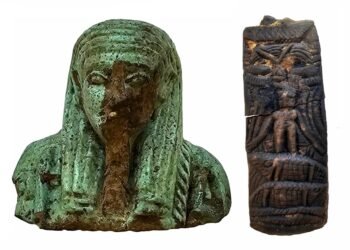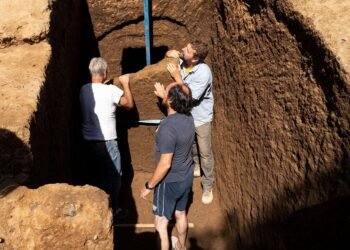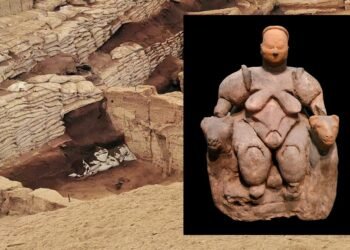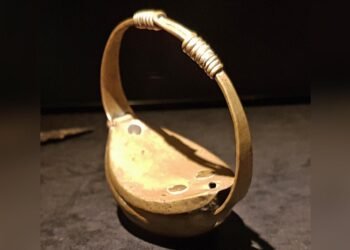A remarkable Pictish ring believed to be over 1,000 years old has been unearthed at a dig in Burghead, Moray, Scotland. The kite-shaped ring, which is thought to feature a garnet or red glass center, was discovered by volunteer archaeologist John Ralph, a former engineer and University of Aberdeen graduate. Ralph, who describes himself as an “enthusiastic amateur,” made the discovery during an excavation led by the University of Aberdeen, under the guidance of Professor Gordon Noble.
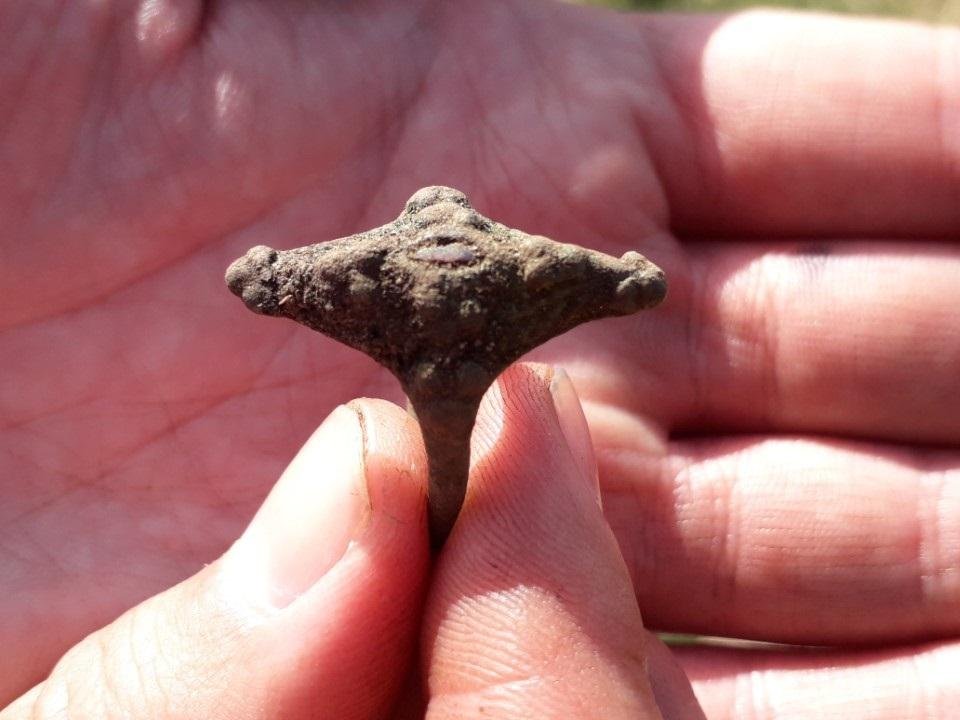
The find is particularly significant, as it sheds new light on the ancient Pictish kingdom, a people whose history has largely been lost to time. The Picts, who lived in what is now northeastern Scotland between 300 CE and 900 CE, left no written records, making archaeological finds like this ring crucial in piecing together their culture and society. The Burghead site, long believed to have lost much of its historical value due to 19th-century construction, has proven to be a treasure trove of Pictish artifacts in recent years.
Ralph made the discovery during his third volunteer stint at the Burghead digs. Over a two-week period, he had repeatedly found objects he believed were significant, only for experts to tell him they were just “shiny pebbles.” However, on the final day of the excavation, he uncovered the ring while clearing the floor of what was once a house.
“I had many moments where I thought I’d found something important, only to be told it was just another pebble,” Ralph said. “But when I uncovered the ring, it felt like a striker scoring a goal. It’s a real thrill to dig up an artifact and think you’re the first person to see it in over 1,000 years.”
Professor Noble, who has led excavation work at the site for three years with funding from Historic Environment Scotland, was equally astonished by the find. “John came over and showed me the ring, and what he handed me was truly remarkable,” Noble said. “Even before conservation work began, we could see the glint of the possible garnet setting despite it being buried for over a millennium.”
Noble explained that very few Pictish rings have ever been discovered, and those that have typically come from hoards deliberately buried for safekeeping. “We certainly weren’t expecting to find something like this lying on the floor of what was once a house. It’s incredible to think about the significance this ring might have held.”
The ring is currently undergoing analysis by the National Museum of Scotland’s post-excavation service, where experts hope to determine more about its origins and significance. According to Noble, the team will examine whether the ring was crafted on-site and speculate on who might have owned such a high-status piece of jewelry. “We have evidence of metalworking and the number of buildings uncovered at Burghead is quite striking. This ring adds to the growing evidence that the site was a significant seat of power during the Pictish period.”
The discovery also holds personal significance for Ralph, who grew up in Burghead and whose ancestors were part of the community that contributed to the destruction of the ancient fort during the 19th century to support the fishing industry. “It feels like I’ve given something back,” Ralph said. “I like to think of archaeology as a dot-to-dot picture, and I’m delighted to have made my own little mark.”
The public will have the opportunity to learn more about the discovery at an open day at Burghead Fort on September 8, where they can meet archaeologists, view Pictish stone carvings, and see traditional leatherworking demonstrations.



